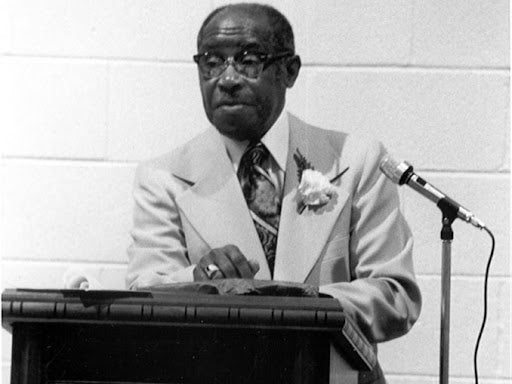It was a key case that set precedent!
The road to equitable education has been long and arduous and we’re still in the fight. Everyday we find new ways to make sure that Black children, educators, and institutions are receiving the same treatment as their white counterparts. Last year, a Bronx tech school began offering alternative educational programs to adult learners in an effort to close the education-to-employment divide. The following month, North Carolina Central University launched a program to increase the number of Black male teachers in education. Earlier this year, a group of Black mothers in Arizona who felt Arizona public schools weren’t providing a “quality education and nurturing environments for Black children” decided to launch their own microschools, providing personalized learning plans for students in Phoenix.
“We could be advocating 24/7 and still not make the impact that we wanted to see. So what do you do, do you go charter? Do you try to keep working in the public school system? Nope, nope, not us. We said, ‘well, we can do it ourselves’,” explained Debora Colbert, executive director of The Black Mothers Forum, an advocacy group for Phoenix parents.
This type of ingenuity has been occurring, and the fight for educational resources to provide a quality education for Black people in America is a tale as old as time. This fight also extends to equal pay for Black teachers; one of the earliest examples of this is present in the William B. Gibbs case that was held in Maryland during the 1900s. Here’s why we should talk about the Gibbs v. Board of Education case more often:
William B. Gibbs Jr. was born July 26, 1905 to parents Lena W. and William Gibbs Sr. in West Chester, Pennsylvania, Blackpast.org reports. Gibbs attended West Chester High School, graduating there before attending Cheyney University where he graduated in 1925, earning a two-year degree in elementary education. That same year, Gibbs landed a teaching job in Maryland, working his way through the ranks and being appointed acting principal and teacher at the Rosenwald Rockville, Montgomery County, Maryland, Colored Elementary School in 1930.
The school was one of more than 5,000 funded by Julius Rosenwald, a Jewish-American philanthropist whose educational initiatives had given almost 40% of African-Americans across 15 states in the South an opportunity for a quality education. According to the Historical Marker Database, Gibbs had been an advocate for equal pay for Black teachers. In 1936, Montgomery County required Black educators to meet the same qualifications as white teachers, but they only received half of the pay. Gibbs initially petitioned the Board of Education for equal pay, but they denied his request. That same year, Gibbs volunteered to become a plaintiff on behalf of the NAACP, filing a suit against the Montgomery County School Board for pay equity discrimination in the case known as Gibbs v. Broome.
Gibbs was represented by young, budding NAACP attorney Thurgood Marshall, who would later make history as the first Black Supreme Court Justice. Marshall represented Gibbs alongside co-counsel Charles Houston, arguing that Gibbs’ 14th Amendment rights were being denied. The defense was structured around the 1896 U.S. Supreme Court decision in Plessy v. Ferguson, which argued segregated facilities, in this case, salaries, should be separate but equal. The Montgomery County Board of Education ultimately settled out of court in 1937.
Following the settlement, the Black Montgomery County educators saw their pay rise to an equal level as white educators over the next two years. The legal arguments created by Marshall would also set precedent and create the foundation for future arguments that he would make in the landmark 1954 Brown vs. Board of Education case. Still, Gibbs was unfairly treated and one year after the settlement, Montgomery Country fired Gibbs on a technicality. He then moved back home to Pennsylvania where he worked in youth education. In 1940, he returned to elementary schools, becoming the principal of Auburn Elementary in Swedesboro, New Jersey. From there, he became a junior high school teacher where he served until his retirement in 1971.
In addition to this work in the educational system, Gibbs also served as a pastor with the African Methodist Episcopal Zion Church. He passed away on December 27, 1984 at the age of 79 years old. Gibbs’ legacy in education was one of the first for pay equity and became a model for other groups experiencing discrimination in the educational system, including women. In later years, the Gibbs v. Broome case was used as part of the argument for the Equal Rights Amendment.
Here’s why we should talk about the Gibbs v. Board of Education case more often. William Gibbs circa 1979. Photo Courtesy of Norma Duffin/Montgomery History

